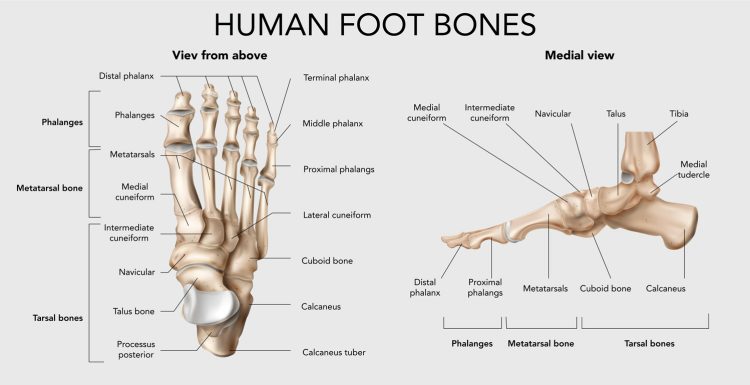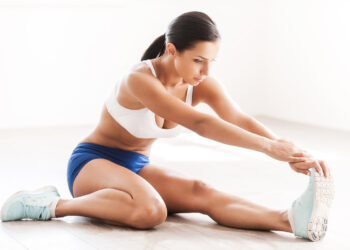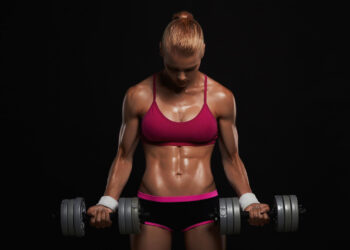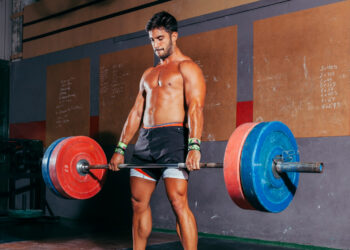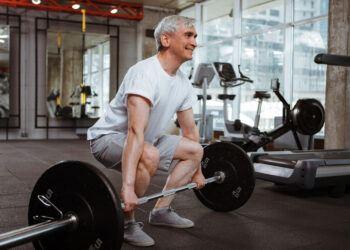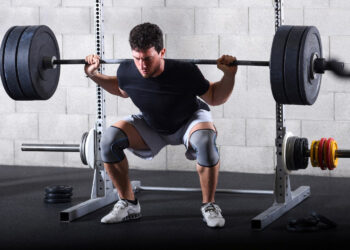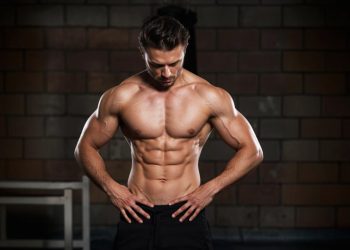Fancy shoe advertisements by big brands have made us believe that stepping foot on the floor without cushy shoes is a sin and can lead to multiple foot and lower body joint issues. The thing is, most of us have given into this propaganda and even walk around our houses wearing shoes.
While shoes with thick foam midsoles might make it feel like you are walking on clouds, they do little to nothing for your foot health. Honestly, I am no different. I wear my Adidas Ultraboosts all the time, and god, are they comfortable! However, these footwear often rob our feet of their natural strength and flexibility.
I realized I lacked foot strength during exercises like walking lunges and calf raises. Things took a turn for the worse when I developed plantar fasciitis. After analyzing my lifestyle and training habits, my podiatrist recommended I start doing barefoot exercises to strengthen my feet and ankles.
Barefoot exercises allow your feet to move and function the way Mother Nature had originally intended.
In this article, I reveal the only five exercises you need to bulletproof your feet and ankles and reduce injury risk. These exercises and routines are the result of over 50 hours of research and months of testing. The best part is that they are simple and require no equipment.
5 Essential Barefoot Exercises
A study in the Gait & Posture journal found that barefoot walking led to increased lower leg muscle activation, suggesting that barefoot activities may help improve muscle strength and feet and ankle proprioception. (1)
Level Up Your Fitness: Join our 💪 strong community in Fitness Volt Newsletter. Get daily inspiration, expert-backed workouts, nutrition tips, the latest in strength sports, and the support you need to reach your goals. Subscribe for free!
Add the following five exercises to your regime:
1. Toe Curls
| Sets & Reps | 3 x 10-15 |
| Equipment Needed | Small towel or marble |
| Target Muscles | Toe flexors, intrinsic foot muscles |
This exercise strengthens your feet and ankles, improving your grip and overall foot dexterity.
Steps:
- Sit on a chair with your feet flat on the floor.
- Place a small object like a towel or marble under your toes.
- Curl your toes and pick up the object.
Pro Tip: Pick up the towel or marbles off the floor and hold them for a few seconds before releasing them.
| Difficulty | Beginner |
| Progression | Use a thicker towel or increase the number of marbles you pick up. |
| Regression | Perform the exercise without any equipment. |
2. Toe Splay
| Sets & Reps | 3 x 10-15 |
| Equipment Needed | None |
| Target Muscles | Intrinsic foot muscles, transverse arch, toe extensors and flexors |
Spreading and contracting your toes is an excellent way to activate those often-neglected intrinsic foot muscles. It improves foot flexibility, enhances balance, and reduces plantar fasciitis pain.
Steps:
- Stand barefoot with your feet hip-width apart.
- Spread your toes as wide as possible and hold for three to five seconds in the fully shortened position.
- Bring them back together.
- Repeat for recommended reps.
Pro Tip: Actively press your big toe into the ground as you splay your toes. This engages the plantar fascia and helps create a stable base for the entire foot
| Difficulty | Beginner |
| Progression | Increase the hold time at the end of each rep, or try to spread your toes while standing. |
| Regression | If you struggle to spread your toes fully, start by focusing on just a few toes at a time. |
3. Alphabet Scrawl
| Sets & Reps | 3 x 1 alphabet per foot |
| Equipment Needed | None |
| Target Muscles | Ankle mobilizers, intrinsic foot muscles |
Drawing alphabets with your feet can seem silly but it can be a game-changer for ankle mobility. It enhances the ankle range of motion, prevents stiffness, and improves agility.
Steps:
- Sit on a chair with your torso upright.
- Lift your feet in the air.
- Draw the alphabet with one of your feet, focusing on big movements.
- Repeat with the other foot.
Pro Tip: Use smooth, controlled movements to maximize neuromuscular coordination and improve motor control.
| Difficulty | Intermediate |
| Progression | Try to write in cursive. |
| Regression | Limit yourself to tracing simple shapes. |
4. Calf Raises
| Sets & Reps | 3 x 15-20 |
| Equipment Needed | None |
| Target Muscles | Calves (gastrocnemius and soleus), tibialis posterior, Achilles tendon, ankle joint |
This exercise strengthens the entire posterior chain of your lower leg, from your calves to your Achilles tendon. Calf raises boost ankle strength and stability, reduce calf tightness, and enhance jumping ability.
Steps:
- Place your bare feet hip-width apart on an elevated platform like an aerobic stepper.
- Raise your heels as high as possible and pause at the top.
- Slowly lower your heels as close to the floor as your mobility allows. Hold the fully lengthened position for three to five seconds.
Pro Tip: Focus on using your toes on the eccentric and concentrics for maximum foot muscle stimulation.
| Difficulty | Beginner |
| Progression | Perform the exercise on a single leg or add weight by holding dumbbells or a barbell. |
| Regression | Perform the exercise with your hands on a wall for support. |
5. Single-Leg Balance
| Sets & Reps | 3 x 30-60 seconds per leg |
| Equipment Needed | None |
| Target Muscles | Intrinsic foot muscles, ankle stabilizers, core, hip stabilizers |
This exercise is great for boosting balance, coordination, and proprioception.
Steps:
- Stand upright with your feet together.
- Lift one leg off the floor and hold for 30 seconds.
- Switch legs.
Pro Tip: Maintain a neutral spine throughout the exercise for better balance and stability.
| Difficulty | Beginner |
| Progression | Try to balance on an unstable surface like a pillow or balance board. |
| Regression | Hold onto a wall or chair for support. |
Barefoot Exercise Routine For Improving Foot Health
Perform the following routine once daily for the best results:
Level Up Your Fitness: Join our 💪 strong community in Fitness Volt Newsletter. Get daily inspiration, expert-backed workouts, nutrition tips, the latest in strength sports, and the support you need to reach your goals. Subscribe for free!
| Exercise | Sets | Reps | Rest |
| Toe Splay | 3 | 10-15 (hold 3-5 sec) | 30 sec |
| Heel Raises | 3 | 15-20 | 30 sec |
| Single-Leg Balance | 3 | 30-60 sec per leg | 30 sec |
| Alphabet Scrawl | 3 | 1 alphabet per foot | 30 sec |
| Toe Curls | 3 | 10-15 | 30 sec |
Increase your training volume gradually to give your muscles, tendons, and joints enough time to adjust to the new stimulus. You must learn to listen to your body; stop the workout if something feels strange or you experience sharp pain during an exercise.
Anatomy of Your Feet and Ankles
Here is an overview of this complex hinge joint:
- Over 100 Muscles, Tendons, and Ligaments: This network of soft tissue controls movements, provides stability and absorbs shock.
- 26 Bones: These create an arch structure that ensures even weight distribution.
- 33 Joints: Facilitates a wide range of motion, including balance and push-offs during walking and running.
Here, I want to talk specifically about the Achilles tendon, which connects the calf muscles to the heel bone. Weak feet and ankles significantly increase the risk of Achilles tendon injuries, especially during strenuous activities, and these injuries are notorious for taking weeks to heal.
A systematic review concluded that barefoot walking allows for greater forefoot spreading, a flatter foot placement, and increased knee flexion. These changes may contribute to improved foot function and reduced joint strain. (2)
Improvements in Just 30 Days
I followed this barefoot exercise routine for a month, and here is the summary of the improvements:
Lower Body Strength
This five-exercise routine targets all the major muscles in your feet, ankles, and calves. At the end of the 30 days, I noticed a significant improvement in my lower body strength and power. My PRs on most leg exercises saw a 10 to 15 percent improvement.
Balance
As my feet and ankles got stronger, my overall balance improved dramatically. Not only that, standing on one leg and walking on uneven surfaces became much easier.
Agility
Agility and nimbleness are vital for improving overall functionality and athleticism. My ability to change direction quickly and smoothly improved as my ankles became more flexible and responsive. This was especially evident during plyometric exercises.
Benefits For Injury Prevention and Athletic Performance
This is how barefoot training helps with injury prevention and improving overall athleticism:
Muscle Activation
Walking, running, and exercising barefoot on varied surfaces engages and strengthens all the muscles in your feet and ankles, reducing injury risk significantly.
Improved Proprioception
Walking and training barefoot enhances your sense of where your feet are in space, improving your balance and coordination. This can translate to better athletic and exercise performance.
Stronger Arches
Children who habitually walk barefooted have been observed to have better plantar arch development as compared to their peers who wear shoes (3). However, adults must incorporate extended barefoot walking into their routine only after consulting their physician, as it can exacerbate the condition in some cases.
Increased Ankle Mobility
The neutral foot movement involved with barefoot training helps improve ankle flexibility and reduces the risk of sprains.
Resilient Tendons
The feet and ankles comprise several tendons which adapt and get stronger and more resilient depending on the demands of barefoot movement.
Conclusion
Your feet are the foundation of your body, and barefoot training can help build a solid base, which can improve movement, performance, and overall health and reduce injury risk. Whether you are facing nagging foot pain that won’t go away or want to improve your foot health, you should include the barefoot exercise routine into your routine.
If you have any questions about the barefoot exercises or need help implementing them into your routine, drop them in the comments below, and I’ll be happy to help!
References:
- Franklin, S., Li, F. X., & Grey, M. J. (2018). Modifications in lower leg muscle activation when walking barefoot or in minimalist shoes across different age-groups. Gait & posture, 60, 1–5.
- Franklin, S., Grey, M. J., Heneghan, N., Bowen, L., & Li, F. X. (2015). Barefoot vs common footwear: A systematic review of the kinematic, kinetic and muscle activity differences during walking. Gait & posture, 42(3), 230–239.
- Gimunová M, Kolářová K, Vodička T, Bozděch M, Zvonař M. How barefoot and conventional shoes affect the foot and gait characteristics in toddlers. PLoS One. 2022;17(8):e0273388. Published 2022 Aug 23. doi:10.1371/journal.pone.0273388

